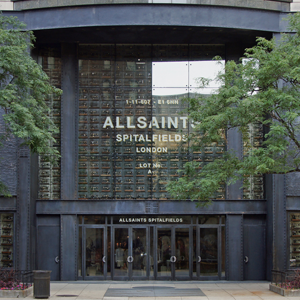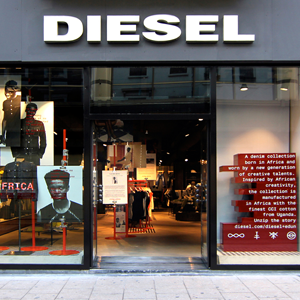DATA
THE PROS:
J.Crew’s code of conduct covers multiple levels of the supply chain and is included in suppliers contracts.
J.Crew is a member of the Fair Factories Clearinghouse (FFC), a nonprofit organization that facilitates continuous improvement in workplace conditions through an information tracking and sharing platform.
THE CONS:
J.Crew states that they cannot trace their supply chain.
/ J.Crew owns J. Crew, J. Crew Factory, Madewell, and crewcuts. They also retail through The Liquor Store and The Ludlow Shop.
/ As of May 25, 2016, the brand operates 287 J. Crew retail stores, 164 J.Crew factory stores, and 106 Madewell stores throughout the United States, Canada, the United Kingdom and Hong Kong.
/ The brand employees 15,600 people. This number does not include people in their supply chain.
/ J.Crew uses 320 factories in 24 countries. These numbers represent the fiscal year 2013. No updates since then.
/ The brand’s annual revenue in 2015 was $2,505.8 million.
/ J.Crew publishes a list of countries where their suppliers are located. The list was last updated in 2013. The brand does not publish a list of supplier’s names and addresses.
/ J.Crew states that they cannot trace their supply chain, “Similar to other retailers, our supply chain is complex and we have less visibility of the indirect suppliers who provide fabric, trim and other components to our direct suppliers, and even less visibility of the origin of the raw materials of these components. Nevertheless, we recognize that we have a responsibility to identify risks and to work to improve working conditions throughout our supply chain. As a result, we regularly communicate with the mill and trim suppliers with which we do business.”
/ J.Crew has outlined plans to monitor and improve the social conditions of its supply chain in accordance with the California Transparency in Supply Chains Act. In 2013, the brand inspected 100% of new factories and 81% of existing authorized factories, which represented about 71% of the company’s total production at that time.
/ The brand shares profiles of some of their collaborations and suppliers on the J.Crew blog.
/ They have a code of conduct that covers: elimination of child labor, elimination of forced labor, freedom of association, collective bargaining, prohibits discrimination, prohibits use of excessive overtime, working conditions.
/ The code of conduct includes multiple levels of the supply chain and is included in suppliers contracts.
/ Regarding wages, the brand states “workers shall be paid at least the minimum wage or a wage that is consistent with prevailing local industry standards, whichever is higher.”
/ J. Crew is a member of the Fair Factories Clearinghouse (FFC), a nonprofit organization that facilitates continuous improvement in workplace conditions through an information tracking and sharing platform.
/ In October 2015, the brand committed to ending on-call scheduling, a practice through which companies wait until the last minute to tell workers whether they’re needed, depending on how busy their store is that.
/ J. Crew’s NYC office is LEED certified.
/ Madewell has a take back denim program in their stores. They send the donated denim to Blue Jeans Go Green, which turns them into housing insulation.
/ In 2013, J.Crew partnered with Business for Social Responsibility (BSR) to pilot a factory-based program to identify and reduce the environmental footprint and operational costs at the factory level. They assessed the environmental impact at three factories in the areas of water, solid waste, chemical management and energy. They state that they expect to use the learnings to inform future supply chain environmental initiatives, but haven’t reported anything since then.
/ J. Crew is committed to the following environmental goals. It appears that they have not updated these goals since 2012:
- Reducing the environmental impact of their facilities and products through reducing energy, paper, and water usage and minimizing waste.
- Improving the environmental performance of their supply chain through collaborating with suppliers to understand and improve their environmental performance and practices.
- Engaging associates, customers and suppliers in their efforts through providing information and tools, as well as honest communication with customers. They don’t provide examples.
/ J.Crew states that they are passionate about supporting public school education and teachers. Since 2011, they have donated funding to DonorsChoose.org and Teach For America.
/ The brand designs and sells t-shirts and sweaters to support charity partners. They state that they have donated over $1 million to partners through their Garments for Good range.
/ J.Crew provides opportunities for their associates to volunteer through their J.Crew Cares program.
/ The brand provides support to Good360.org through clothing and product donation.
/ According to Ecouterre in 2015, J.Crew Crewcuts collaborated with Edun to produce an exclusive made-in-Kenya collection, including a t-shirt to benefit St. Ann’s Orphanage.
/ Salary.com reported that Millard Drexler, the J.Crew CEO received a base salary of $200,000 in fiscal 2014.
/ In June 2015, New York Post reported that J.Crew executive, Alejandro Rhett, fired 175 workers and then posted pictures of himself celebrating with other employees at a bar on social media. A J.Crew spokesperson reported that the company does not condone Rhett’s behavior and that “appropriate actions took place.”
/ In June 2015, Fashion Week Daily reported that Alejandro Rhett, the vice president of men’s merchandising at J.Crew, was fired after Instagram posts where he mocked fellow employees that had just been laid off landed him on the cover of The New York Post with the headline “J. Cruel.” J.Crew neither confirmed nor denied the firing.
/ Madewell has a take back denim program in their stores. They send the donated denim to Blue Jeans Go Green, which turns them into housing insulation.
CONTRIBUTE
DOWNLOAD DATA · LEARN OUR PROCESS
VOICES
 NEIL SAUNDERS AS QUOTED BY MALLORY SCHLOSSBERG | BUSINESS INSIDER
NEIL SAUNDERS AS QUOTED BY MALLORY SCHLOSSBERG | BUSINESS INSIDER
“That people are unwilling to pay full price means that discounting at mainstream stores and via the mainstream website is also very frequent.While this is a necessary evil to clear down inventory, J. Crew is building a reputation as a retailer from which customers should never buy at full price — something that is hampering its ability to rebuild its brand and price integrity.” – 05/26/2016

KIM BHASIN | BUSINESS OF FASHION
“Executives have been struggling to patch up J. Crew’s women clothing business after a dismal year plagued by fashion misses and strategic errors.” – 06/05/2021

CHARLOTTE WILDER | BOSTON.COM
“I am a J.Crew loyalist who relies on the brand to outfit me in trendy but safe articles of clothing that, while pricey, are well-made and will last for years. My closest is a testament to that. I still have clothes I bought there in high school. But not so much anymore. Two new dresses I bought at J.Crew last month have ripped, seemingly for no reason. I’m planning to bring them back and ask for a refund, because new things that fit you correctly aren’t supposed to spontaneously slit up the middle the second time you wear them.” – 6.11.2021
We haven’t heard anything from the brand, yet. Check back soon!
ADD YOUR VOICE
VISIT THIS BRAND · CONTINUE SEARCHING
What do you think?
How do you feel about this brand now that you're more familiar with their practices? Send a signal, take action and let us, the brand and the world know how you feel.










As of Feb 15, 2016, Project Just states the following about J Crew: “The brand hasn’t updated their social or environmental reporting or commitments since 2011/2012. J.Crew states that they cannot trace their supply chain. The brand has plans to monitor and improve the social conditions of its supply chain. It appears that these plans have not been updated since 2011.”
Upon visiting J Crew’s website as of Feb 15, 2016, visitors will read “At the end of fiscal year 2013, there were 200 active vendors representing approximately 320 authorized factories worldwide. We inspected 100% of new factories and 81% of our existing authorized factories. The factories we inspected in fiscal 2013 represent approximately 71% of our total production.” (See https://www.jcrew.com/ae/flatpages/social_res_april1_2.jsp?bmUID=lbfCQ00&bmLocale=en_AE).
J Crew was one of six major retailers who “promised” in 2015 to end on-call scheduling, a practice through which companies wait until the last minute to tell workers whether they’re needed, depending on how busy their store is that day. This practice limits workers’ ability to plan ahead for child care, pick up shifts at other jobs, and earn a steady wage. In October of 2015, J Crew claimed publicly proclaimed that it had stopped the practice. (See http://www.crainsnewyork.com/article/20151023/RETAIL_APPAREL/151029917/j-crew-ends-brutal-scheduling-policy-in-u-s-stores). This, however, has not been confirmed. Further, it if abolished, it has not been determined if J Crew has implemented fair and predictable scheduling practices, policies, and standards. (See http://www.thenation.com/article/j-crew-urban-outfitters-and-more-just-stopped-using-on-call-scheduling).
It might be time update J Crew info (whether positive or negative).
Thanks for this comment! We’ll review this and update the page next week with the appropriate edits- Natalie from JUST
Hi DG, we’ve reviewed the information you sent us and have updated J. Crew and Madewell’s pages accordingly. Thanks so much for commenting, it really helps us keep our pages up to date! Have a great week, Team JUST.